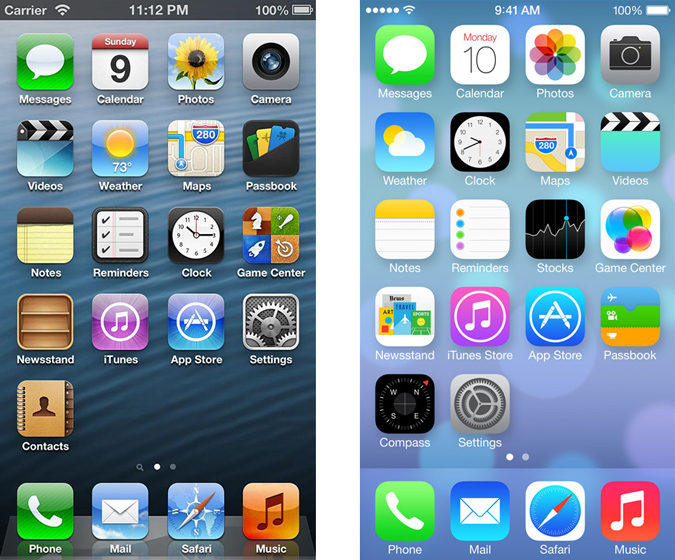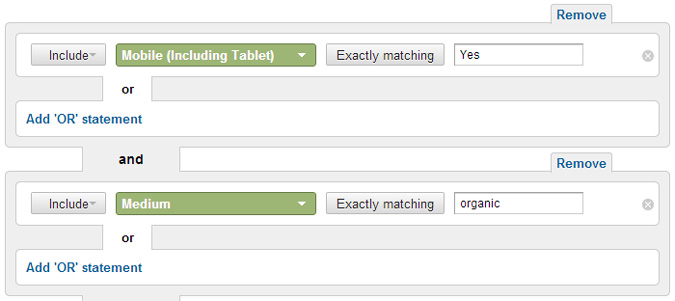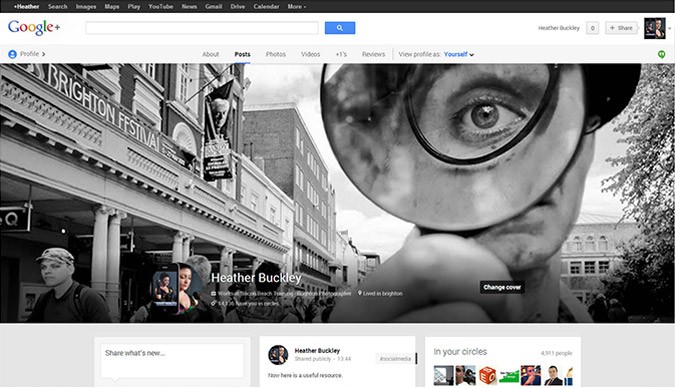Updated 13/06: Facebook has confirmed it will be rolling out hashtags for users, starting from today.
The latest news out of Facebook HQ (it seems like there's something new every week at the moment!) is that the social giant is considering trialling the use of hashtags, the now ubiquitous topic grouping symbol popularised by rival Twitter.
If Facebook does go ahead with the idea, rumoured to be intended to work alongside the new graph search feature to make topics and conversations easier to find, it will join Twitter, Pinterest, Google+ and its own sepia-soaked photosharer Instagram as a user of the device.
Bearing all that in mind, we thought it would be worth having a refresher in how best to use hashtags for marketing on all the major platforms. Of course to really get to grips with marketing on Twitter, Facebook and the like, our Social Media Workshop is ideal.

If you want to see hashtags in action, follow us on Twitter, Facebook, and Pinterest.
So how do we go about using hashtags for marketing? Well firstly we need to distinguish between two different ways they are used by businesses across social media:
1/ Using Existing Hashtags
One very simple and popular way to use hashtags for marketing businesses is to find trending hashtags related to your specific niche and use them in your posts.
If for example, you write about Project Management, you could use the hashtags #pm #pmot to open up your posts to a wider audience who may be searching for content placed under that grouping.
Going down this route is generally seen to be the 'safest' option when using hashtags but you still need to be careful.
Aaron Charlie
13 Jun 2013
|
So it's finally here! Apple CEO Tim Cook announced iOS 7 yesterday, hailing it as the "biggest change to iOS since the introduction of the iPhone". It's been long-awaited and much debated but now we can finally see what all the fuss is about. It's not going to be out for a while yet though, so now's the perfect time to learn how to create apps, on our iOS App Development Course. Now there a plenty of articles out there which go into great detail about the move away from skeuomorphism and others which wax lyrical over the new Control Center. We won't do that. |

We're going to give you the facts (7 of them to be precise) and a quick summary of the key points you need to know about each one. Just enough knowledge to rattle out to your friends over a skinny chai latte at your local vegan coffee shop (or some other lazily stereotypical hipster activity).
So let's dive into this new apple-y world full of flat buttons, Instagram-esque camera filters and mesmerising translucent displays and see what we can find.
1/ iOS 7 New Design
This is what all the hype is mostly about, and not without reason. The entire look and feel of the system has changed dramatically - modernised even. Take a look at this comparison between the design of the iOS6 and 7 home screen:

Gone are the shadows, the bevels and the semi-bold font. In come bright colours, flat-looking buttons and a thin, stylish type-face.
Aaron Charlie
12 Jun 2013
True leaders lead whether they've been given an official position of power or not.
On our Leadership Training Course, you'll learn that it takes more than just a title to be a leader; it takes courage, passion, empathy, confidence and a whole lot more.
Being able to lead effectively when you're not a designated leader is tough.
It's a fine line to tread between being helpful and being arrogant or egotistical, and this is especially the case with how your boss or superior will react to you taking some of the reigns.

With that in mind, I thought we'd take a look at how to lead upwards, without encroaching on your manager's territory.
This is the sort of advanced people management skill that will really give your career a boost in the long-term.
Understanding Yourself
Analyse your skills
If you're aware of where your strengths and weaknesses lie, you'll be better equipped to deal with others, and dealing with others is the fundamental goal of leadership.
Is communication something you're comfortable with or does it need working on? Are you a confident talker or a thoughtful listener (or both)? Do you lead with charisma or are you reserved?
Asking these questions, and others, of yourself will allow you to get to grips with who you are in a professional capacity, and only then can you begin to lead others.
Andy Trainer
10 Jun 2013
Everyone hates queueing. It annoys customers and business-owners alike; so much so in fact that queue management is considered a significant part of business theory as it can have a huge impact on the service that a customer receives.
If it's done well, it becomes a barely noticeable aspect of the experience. Done wrong, and it can lead to excessive waiting times that will distress and irritate the customer.
Using the DMAIC method from Six Sigma, it's possible to reduce waiting times in queues for everywhere from supermarkets to airports. This will lead to a better service overall and that means happy customers.
Six Sigma is used in a wide variety of businesses and settings to increase efficiency and quality. From factories to governments, its primary use is to make processes better. On our Six Sigma Green Belt Training Course you'll learn all the basics of how to apply Six Sigma to your business needs.
Define

So firstly, it's important to define what the exact issue is with the queueing system. Is it that the waiting time is consistently so long that customers are actually leaving before reaching the front? Is it that there are certain 'peak' times when staff can't handle the volume of customers?
Knowing exactly what the problem is allows for more targeted, and therefore successful, addressing of the issue.
According to queue management theory, there are three aspects of queueing which could be causing an issue:
- Arrival Process
- Service Mechanism
- Queue Characteristics
Arrival Process
How is it that customers are coming to be in the queue? Do they arrive in droves? One-by-one? Is there a primary queue and a secondary queue (like at a club for example; one queue to get in, another to pay)?
Is there some kind of bottleneck in the arrival process that means too many customers enter the queue at once? Answering these questions allows you to pinpoint the problem if it's in the arrival process.

Andy Trainer
7 Jun 2013
Every new statistic confirms that Mobile search is on the rise, overtaking desktop search in some locations and niches. If you're not already looking into mobile search then you should be, especially as mobile search intent is usually very different to desktop intent - and this has strong implications for your search strategy.
Use the tips in this post to dive into your mobile search analytics to discover your existing mobile search traffic and begin to look for new opportunities moving forward. If you need help with SEO or Google Analtyics then take a look at our SEO courses which include Google Analytics training.
1/ Are Your Visitors Using Mobile Search?
The very first thing you should do is check what percentage of your visitors are using mobile, this should give you an indication of how much time you should put aside for mobile. However, don't forget that mobile is still on an upwards trend so your niche might be just about to explode onto mobile. You might also be providing a horrible mobile experience which will make returning visitors unlikely.
We set up a Mobile Search filter that allows us to dig into our data and find out more about our mobile searchers. Click the link to add the filter to your profile or set a new filter up as below. This Advanced Segment is your go-to for any mobile search related data.


Aaron Charlie
5 Jun 2013
Starting out in the world of Project Management can be a daunting experience for anyone. With so many terms, methods and variations to deal with, getting to grips with everything can be a real struggle.
For those new to Project Management, our Introduction to Project Management Training and our PRINCE2 Courses are a great place to start but there are also plenty of online resources available to help make things easier for you.

YouTube is one of those resources. There's something about videos which help to clarify and simplify complex ideas but wading through YouTube to find the best guides to Project Management isn't exactly the most interesting of tasks.
Luckily, we've done it so you don't have to and so here are our top ten Project Management videos aimed at those just starting out. We've everything from the very basics through to introducing the various methodologies and a fun one at the end.
Enjoy!
Andy Trainer
3 Jun 2013
There's no doubt that Word will around for a long time. It's taught in all schools and is the de facto software for Word Processing and document creation worldwide. However, InDesign has become more and more popular in businesses due to the desire to create more consistent and professional internal and external documents.

If you have ever tried to persuade your employees/co-workers/boss to switch to InDesign then you've probably been met with one or all the following:
I don't want to learn new software!
It's too complicated!
There's nothing wrong with Word!
I'm going to try and dispel these myths with 6 reasons why now is the right time to switch from Word to InDesign:
Aaron Charlie
31 May 2013
Your profile and cover photos on social media are an essential consideration when setting up your page but they're often one of the most neglected areas for trainees on our social media courses. They tend to be the first thing any visitor looks at and therefore are your chance to make a great first impression.
Getting the right image for each position and platform can be tough - there's no consistent size or rules that apply - which is why we decided to put together this handy guide to help you get the best images for each of your pages on Facebook, Twitter, Google+, LinkedIn and YouTube.

There are two options for you to choose from, depending on your experience and understanding.
If you're a dab hand at Photoshop, we've created a set of social media cover photo templates for you to use. You can download all of them here and to use them, just follow the instructions below. We've also added graphics showing the dimensions for each so you can resize your images without using our templates.
Struggling with images for the web? Photoshop is an essential tool for web marketing and our Photoshop courses are perfect for getting to grips with resizing, cropping and saving images for the web.
Craig Charley
24 May 2013